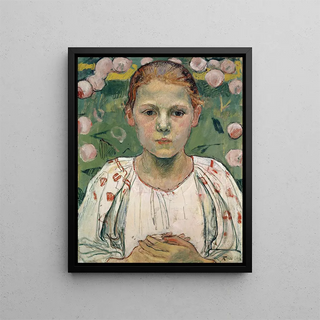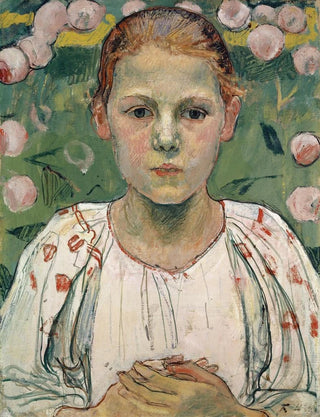Painting Portrait of Käthe von Bach in the garden - Ferdinand Hodler | Art print


View from behind

Frame (optional)
In the fascinating world of art, some works manage to capture the essence of an era while revealing the depth of a personality. The "Portrait of Käthe von Bach in the Garden" by Ferdinand Hodler is one of those creations that transcend the mere frame to immerse us in a world of sensations and emotions. This piece, created at the turn of the 20th century, stands out for its ability to evoke not only the beauty of its subject but also the atmosphere of a lush garden that seems to whisper forgotten secrets. Through this painting, Hodler invites us to contemplate the relationship between man and nature, while highlighting the iconic figure of Käthe von Bach, muse and companion of the artist.
Style and uniqueness of the work
Ferdinand Hodler's style is characterized by a quest for light and color, as well as a particular attention to forms. In "Portrait of Käthe von Bach in the Garden," the artist deploys a vibrant palette that plays with shades of green and blue, creating an atmosphere that is both peaceful and dynamic. The garden, which surrounds the central figure, is more than just a backdrop; it becomes a character in its own right, enveloping Käthe in an aura of serenity and mystery. Fluid lines and delicate contours accentuate the grace of the model, while shadows and highlights add an almost spiritual dimension to the scene. This work also stands out for its psychological approach, where Käthe's facial expression, both gentle and pensive, invites us to explore her inner thoughts. The harmony between the subject and its environment demonstrates Hodler's mastery in creating balanced and evocative compositions.
The artist and his influence
Ferdinand Hodler, an emblematic figure of Swiss art, managed to establish himself on the European artistic scene thanks to his unique style and innovative vision. Influenced by symbolism and post-impressionism, he developed an approach that combines realism and idealism, seeking to express universal emotions through his works. His commitment to the beauty of nature and the complexity of human relationships is reflected in every brushstroke.

Matte finish

View from behind

Frame (optional)
In the fascinating world of art, some works manage to capture the essence of an era while revealing the depth of a personality. The "Portrait of Käthe von Bach in the Garden" by Ferdinand Hodler is one of those creations that transcend the mere frame to immerse us in a world of sensations and emotions. This piece, created at the turn of the 20th century, stands out for its ability to evoke not only the beauty of its subject but also the atmosphere of a lush garden that seems to whisper forgotten secrets. Through this painting, Hodler invites us to contemplate the relationship between man and nature, while highlighting the iconic figure of Käthe von Bach, muse and companion of the artist.
Style and uniqueness of the work
Ferdinand Hodler's style is characterized by a quest for light and color, as well as a particular attention to forms. In "Portrait of Käthe von Bach in the Garden," the artist deploys a vibrant palette that plays with shades of green and blue, creating an atmosphere that is both peaceful and dynamic. The garden, which surrounds the central figure, is more than just a backdrop; it becomes a character in its own right, enveloping Käthe in an aura of serenity and mystery. Fluid lines and delicate contours accentuate the grace of the model, while shadows and highlights add an almost spiritual dimension to the scene. This work also stands out for its psychological approach, where Käthe's facial expression, both gentle and pensive, invites us to explore her inner thoughts. The harmony between the subject and its environment demonstrates Hodler's mastery in creating balanced and evocative compositions.
The artist and his influence
Ferdinand Hodler, an emblematic figure of Swiss art, managed to establish himself on the European artistic scene thanks to his unique style and innovative vision. Influenced by symbolism and post-impressionism, he developed an approach that combines realism and idealism, seeking to express universal emotions through his works. His commitment to the beauty of nature and the complexity of human relationships is reflected in every brushstroke.
12,34 €






